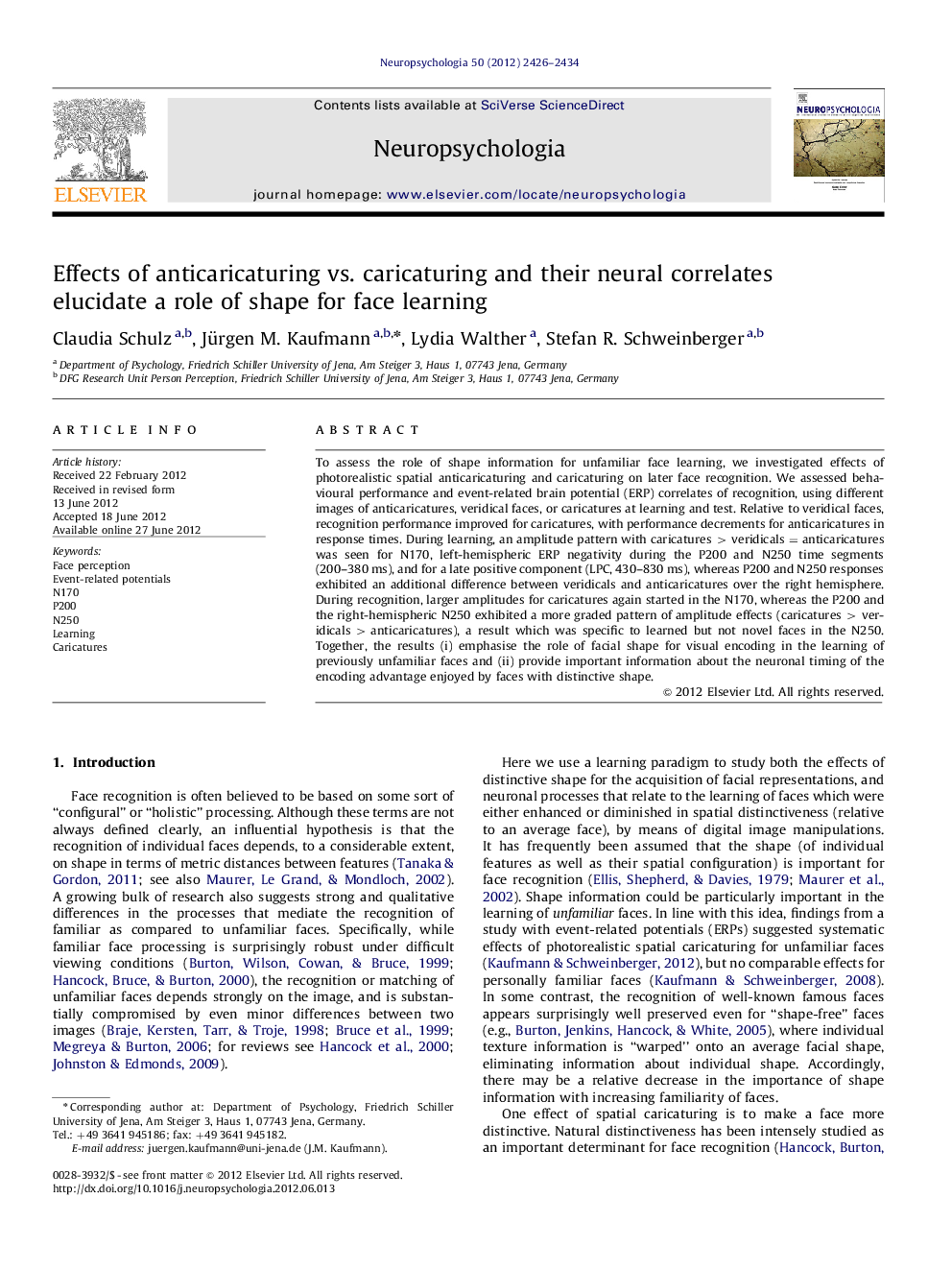| Article ID | Journal | Published Year | Pages | File Type |
|---|---|---|---|---|
| 944858 | Neuropsychologia | 2012 | 9 Pages |
To assess the role of shape information for unfamiliar face learning, we investigated effects of photorealistic spatial anticaricaturing and caricaturing on later face recognition. We assessed behavioural performance and event-related brain potential (ERP) correlates of recognition, using different images of anticaricatures, veridical faces, or caricatures at learning and test. Relative to veridical faces, recognition performance improved for caricatures, with performance decrements for anticaricatures in response times. During learning, an amplitude pattern with caricatures > veridicals = anticaricatures was seen for N170, left-hemispheric ERP negativity during the P200 and N250 time segments (200–380 ms), and for a late positive component (LPC, 430–830 ms), whereas P200 and N250 responses exhibited an additional difference between veridicals and anticaricatures over the right hemisphere. During recognition, larger amplitudes for caricatures again started in the N170, whereas the P200 and the right-hemispheric N250 exhibited a more graded pattern of amplitude effects (caricatures > veridicals > anticaricatures), a result which was specific to learned but not novel faces in the N250. Together, the results (i) emphasise the role of facial shape for visual encoding in the learning of previously unfamiliar faces and (ii) provide important information about the neuronal timing of the encoding advantage enjoyed by faces with distinctive shape.
► Opposite effects of spatial anticaricaturing and caricaturing on face learning. ► Occipitotemporal P200 and N250 ERPs sensitive to shape distinctiveness. ► Results specify the role of distinctive shape for face learning. ► Data confirm a role of the right hemisphere in early shape encoding.
